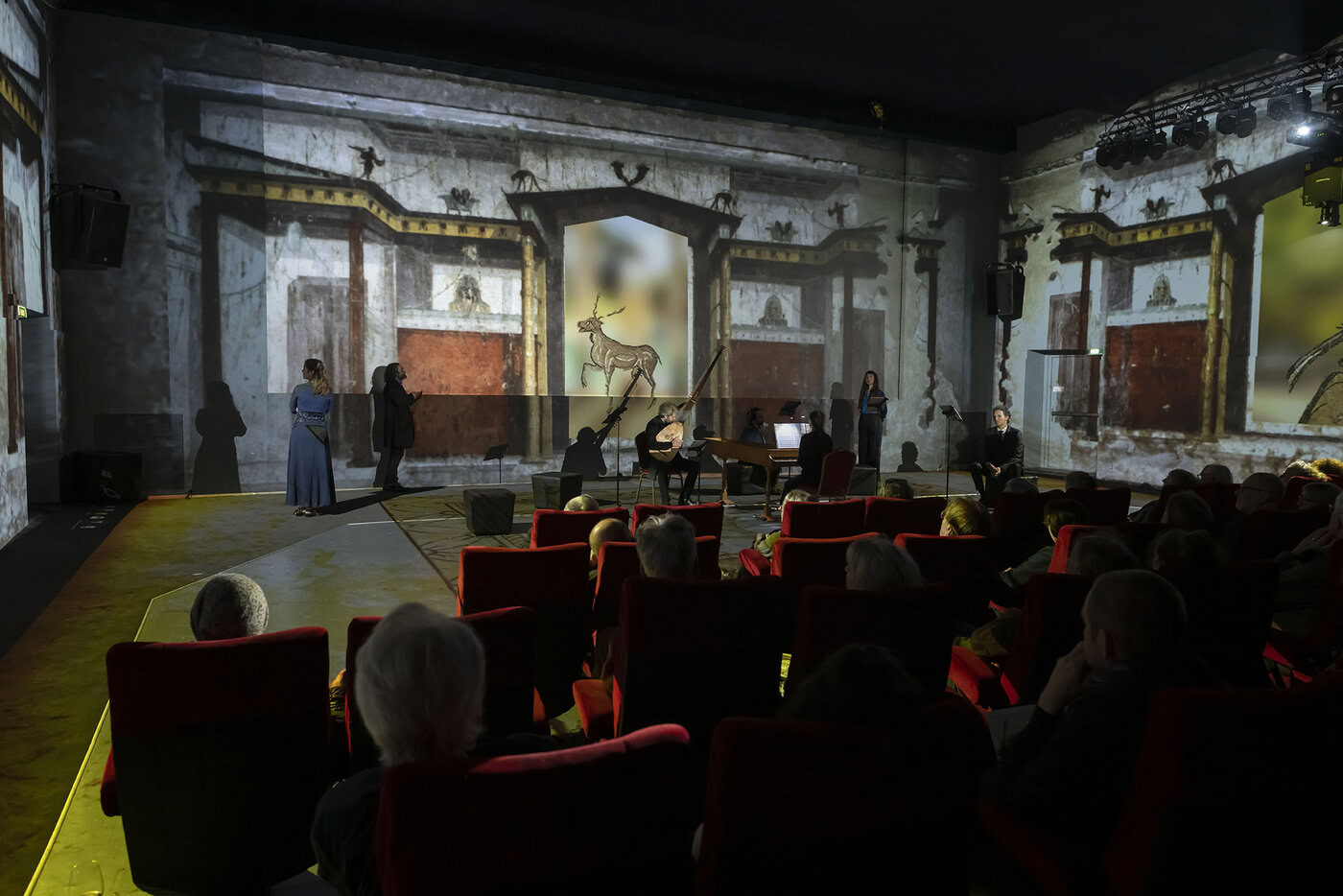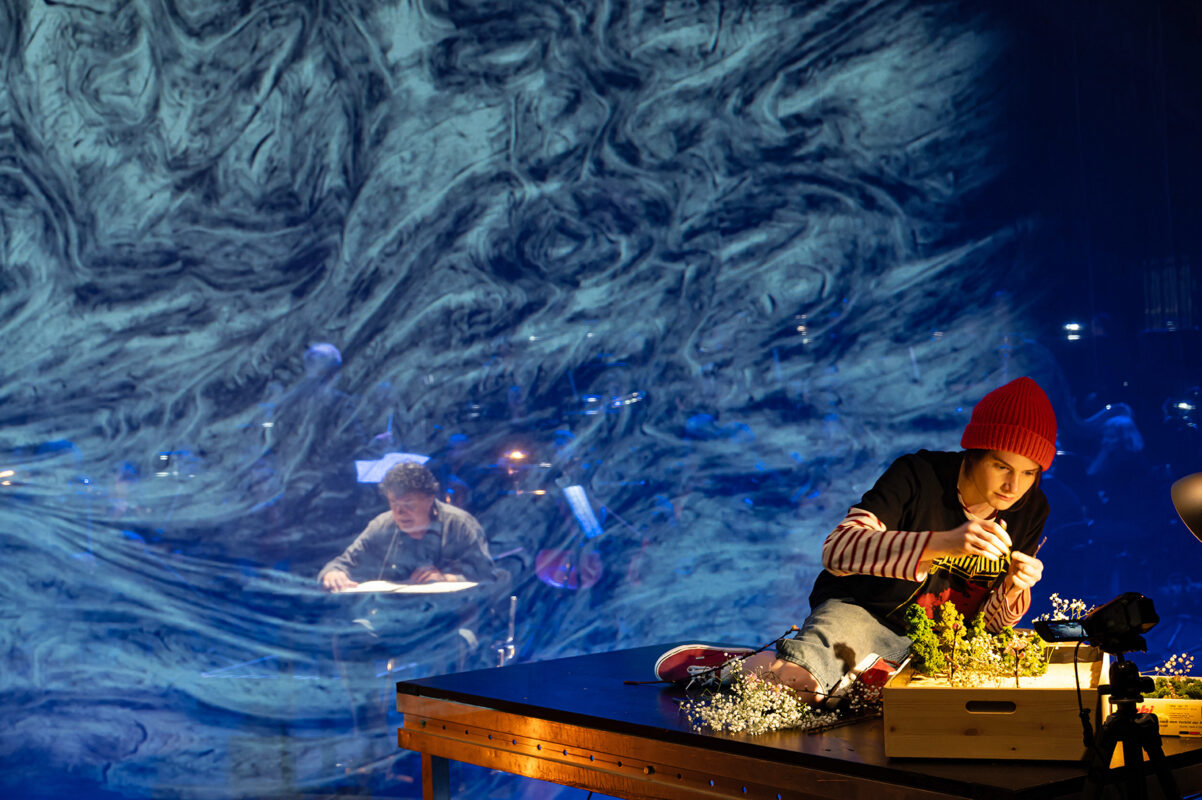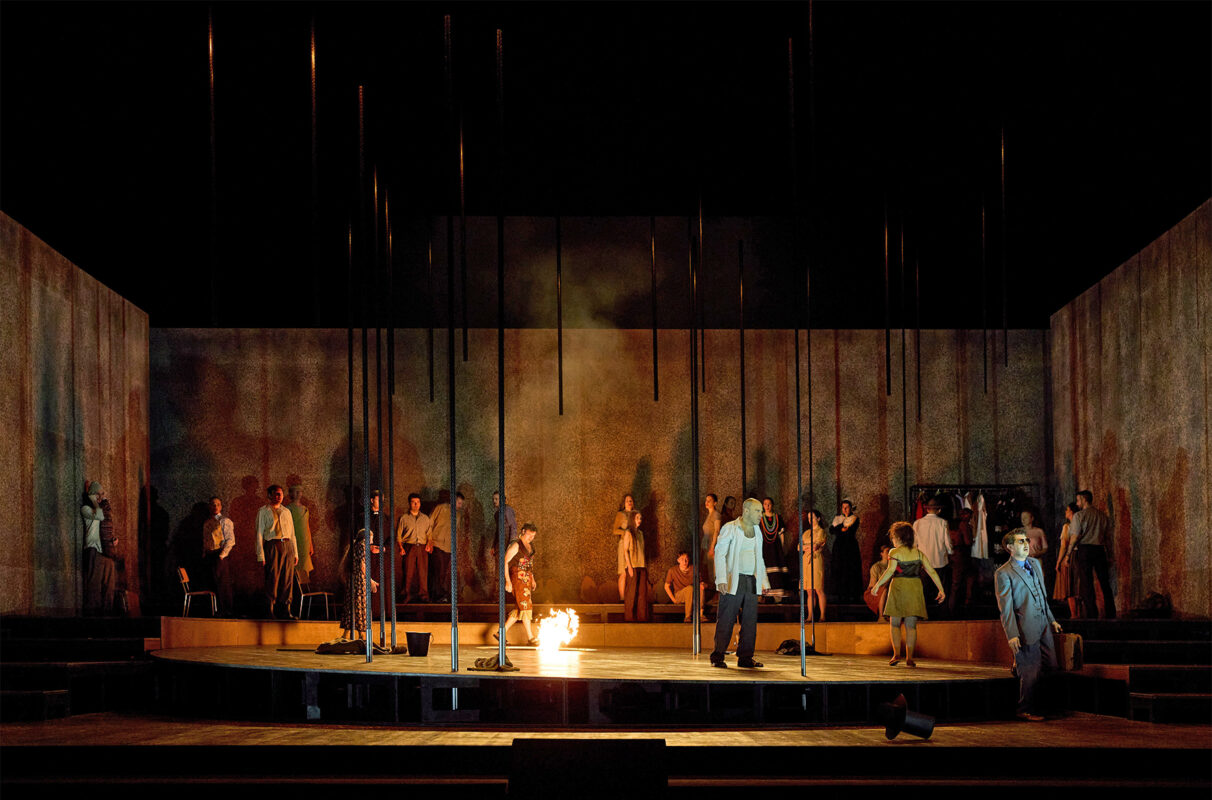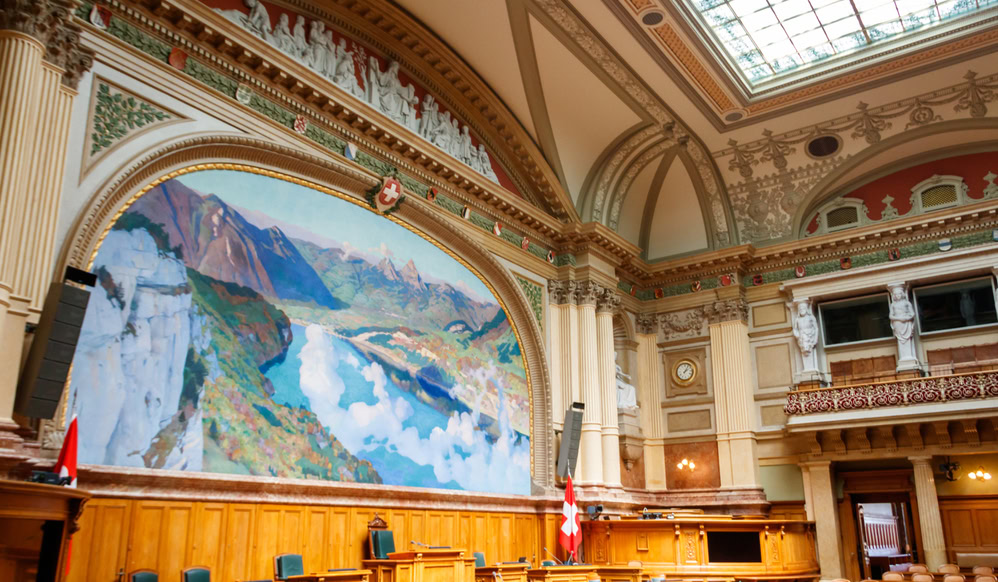Orpheus as a series of images and musical collage
After a four-year break, Musikwerk Luzern presents Beni Santora's multimedia production of the Orpheus myth. The Basel vocal ensemble Domus Artis sings Jacopo Peri's opera "Euridice" in the middle of a cinematic revue.

Beni Santora founded Musikwerk Luzern in 2015 to perform modern classics such as Béla Bartók and Igor Stravinsky in innovative concert formats. He has always been interested in the cinematic element. As a cellist, he also studied film directing and trained as a cameraman. His multimedia collage on the Orpheus mythology ... and he looked back testifies to this dual talent. The music is given time and space to take effect.
However, the technical effort involved is enormous. Santora and his team found the necessary infrastructure in the former Moderne cinema. The conversion into the "Moderne Karussell" has created a spacious room with three cinema screens. Five high-performance projectors are available to enable 360-degree projections.
Gently animated images
For his cinematic realization, Santora searched the world for depictions of Orpheus from 4000 years of cultural history. This most famous love story of antiquity has always inspired artists. Orpheus is the Greek hero who descended into the underworld to bring his beloved Eurydice back from the realm of the dead. On his return, however, he should not have looked back at her. He did, however, and lost her a second time.
Santora projects the selected images side by side on the three walls as if in a gallery: an antique bronze, an early Byzantine mosaic, Greek statues, a 17th century tapestry or oil paintings from the Romantic period. This gallery perspective is the common thread running through the production. Similar to Mussorgsky in the Pictures of an exhibition Santora returns to her again and again.

He generally works with still images, which he gently animates. He zooms in on one of the subjects, enlarges sections or moves individual figures across the three screens. The Lucerne agency 360 Emotion has implemented this "exhibition in moving pictures" using state-of-the-art technology.
As a viewer, you sit right in the middle of the action in comfortable movie seats. Thanks to the calm dramaturgy, you have enough time to take a closer look at the images. The enlargements bring the characters to life and bring them close to you. Times long past appear to fill the room.
Live music and sound recordings
And the music? Here Santora ventures a dialog between the live performance of Jacopo Peri's opera Euridice and recordings that he plays to accompany the pictures: ancient Roman festive music, polyphonic madrigals, symphonic works by Franz Liszt, Claude Debussy, Igor Stravinsky, Hans Werner Henze and Philipp Glass, always with reference to the Orpheus theme.
Even if this tour d'horizon through music history is tailored to the art being presented, the constant stylistic changes are exhausting. The juxtaposition of live music and surround sound via loudspeakers is particularly tricky. No sooner have you listened to the peculiarity of Renaissance music than you are abruptly torn out again by a sound recording.
But you get used to it over time. Peri's opera is the musical instance to which you return again and again, it forms the narrative framework. First performed in Florence in 1600, it is the oldest completely preserved opera in the history of music. Surprisingly, this simple work can unfold well in the multimedia "Gesamtkunstwerk".
The Basel vocal ensemble Domus Artis sang the five parts at the premiere on April 11 with committed dedication, accompanied by Guilherme Barroso on the theorbo and Inés Moreno Uncilla on the harpsichord. The concertante singers captured the audience's attention with their lively articulation and natural phrasing.
In the main role of Orpheus, the tenor Cyril Escoffier moved the audience with a devoted lament. His warm timbre also went well with the clear, bright soprano of Jaia Niborski, who sang the proud Eurydice. And the rich color palette of the ensemble was impressively shown to advantage in the more upbeat choral songs. As enormous as the effort for this Orpheus production was, it gave the ancient material a coherent, modern face.
Further performances: April 24 and 25 and May 2, 3 and 5. From April 25 to June 13, a shortened version without Domus Artis can be seen Thu to Sun, 4 to 9 pm.









